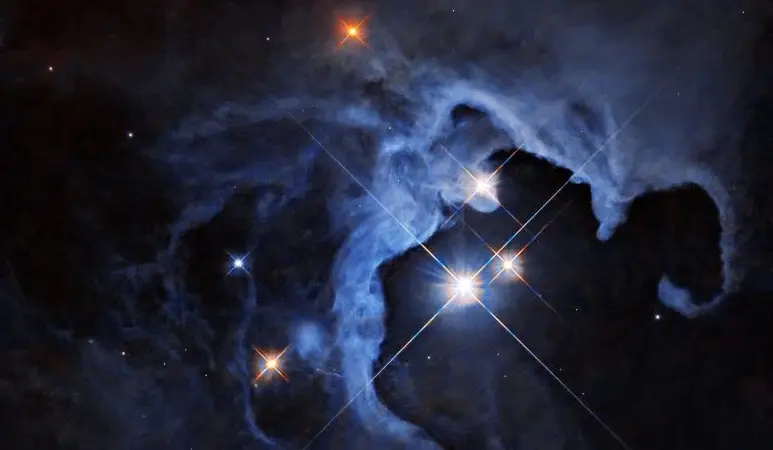Spiral galaxy NGC 3059, located 57 million light-years away, was captured with the Hubble telescope focusing on H-alpha radiation, which indicates star formation.
This stunning Hubble Space Telescope image shows barred spiral galaxy NGC 3059, located about 57 million light-years from Earth. The data used to create this image was collected by Hubble in May 2024 as part of an observation program examining a number of galaxies. All observations were made using the same range of filters: partially transparent materials that transmit only very specific wavelengths of light.
The role of filters in astronomy
Filters are widely used in observational astronomy and can be calibrated to transmit light over extremely narrow or slightly wider ranges. Narrowband filters are very valuable from a scientific perspective because certain wavelengths of light are associated with specific physical and chemical processes.
For example, hydrogen atoms are known to emit red light with a wavelength of 656.46 nanometers under certain conditions. Red light at this wavelength is known as H-alpha radiation or the “H-alpha line”. It is very useful to astronomers because its presence acts as an indicator of certain physical processes and conditions; for example, it often indicates the formation of new stars.
Use of H-alpha radiation
Thus, narrow-band filters calibrated to pass H-alpha radiation can be used to identify star-forming regions of space.
A narrow band filter called the F657N or H-alpha filter was used in this image. F means filter and N means narrow. The numerical value refers to the peak wavelength (in nanometers) that the filter passes through. The hobbyists among you may have noticed that 657 is very close to the H-alpha line wavelength of 656.46.
Data collected using five other filters also contributed to this image; these are all broadband filters; This means they transmit a wider range of light waves. This is less useful for identifying highly specific lines (such as the H-alpha line), but still allows astronomers to investigate relatively specific parts of the electromagnetic spectrum. Additionally, combined information from multiple filters can be used to create beautiful images like this.













